
Pardosa is a large genus of wolf spiders, commonly known as the thin-legged wolf spiders. It was first described by C. L. Koch, in 1847, with more than 500 described species that are found in all regions of the world.

The Arctic wolf spider is a type of wolf spider in the genus Pardosa, with a holarctic distribution and endemic to the Arctic, particularly Greenland.

Pardosa amentata, otherwise known as the wolf spider or spotted wolf spider is a species of spider in the genus Pardosa belonging to the family of wolf spiders, Lycosidae. The species has a widespread distribution in central Europe and northwestern Europe and are commonly found on the British Isles. The species hunts its prey on the ground rather than weaving a web.
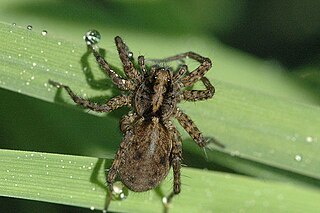
Pardosa agricola is a wolf spider species in the genus Pardosa found from Europe to Kazakhstan.

Pardosa proxima is a wolf spider species with a distribution of "Macaronesia, Europe, Russia, China".

Pardosa pullata is a species of spiders from genus Pardosa in the family Lycosidae. It was described by Clerck, in 1757.
Pardosa tesquorum is a spider in the genus Pardosa, in the family Lycosidae . The distribution range of Pardosa tesquorum includes Russia, Mongolia, China, the US, and Canada.
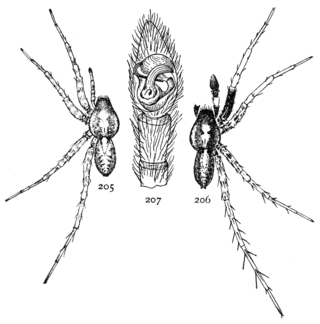
Pardosa saxatilis is a species of wolf spider in the family Lycosidae. It is found in the United States and Canada.
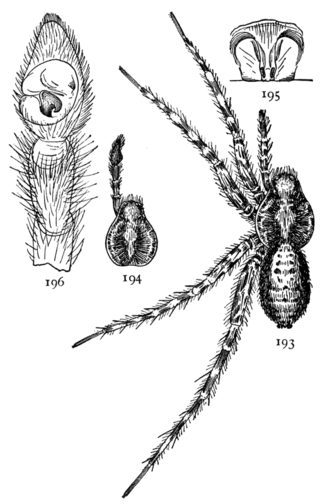
Pardosa xerampelina is a species of wolf spider in the family Lycosidae. It is found in the United States and Canada.
Pardosa metlakatla is a species of wolf spider in the family Lycosidae. It is found in the United States and Canada.
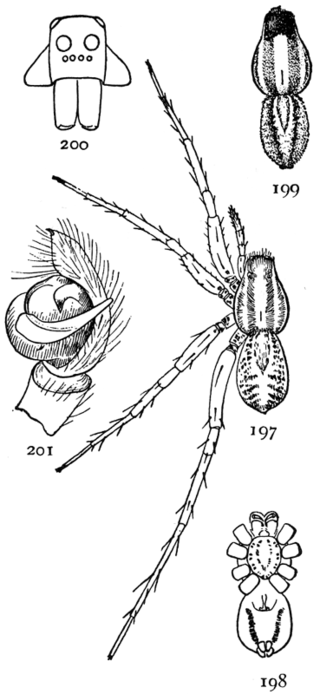
Pardosa distincta is a species of wolf spider in the family Lycosidae. It is found in the United States and Canada.
Pardosa mackenziana is a species of wolf spider in the family Lycosidae. It is found in the United States and Canada.
Pardosa groenlandica is a species of wolf spider in the family Lycosidae. It is found in Russia, Canada, the United States, and Greenland.
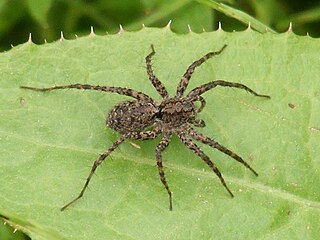
Pardosa milvina, the shore spider, is a species in the wolf spider family. They are mainly found near rivers and in agricultural areas in eastern North America. P. milvina feed on a large variety of small insects and spiders. Ground beetles such as Scarites quadriceps and large wolf spiders such as Tigrosa helluo are predators of P. milvina. P. milvina are smaller spiders with thin, long legs. This species captures prey such as arthropods with their legs and then kills them with their venom. Their predators are larger wolf spiders and beetles. P. milvina are able to detect these predators from chemotactile and vibratory cues. These spiders lose limbs when escaping from predators and they can change their preferred location in order to avoid predators. P. milvina also use chemical cues in order to mate. During their mating ritual, the male raises his legs and shakes his body. Both males and females can use silk, a chemotactile cue, for sexual communication. Additionally, female shore spiders heavily invest in their offspring, keeping them in egg sacs and carrying them for a few weeks after they are born.
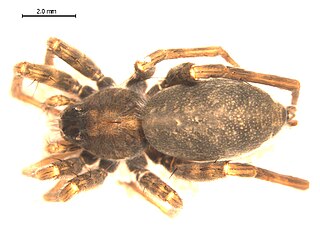
Pardosa lapidicina, the stone spider, is a species of wolf spider in the family Lycosidae.
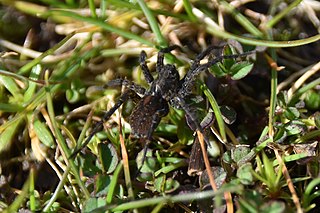
Pardosa vancouveri is a species of wolf spider in the family Lycosidae. It is found in the United States and Canada.

Pardosa agrestis is a non-web-building spider in the family Lycosidae, commonly known as wolf spiders.

Pardosa pseudoannulata, a member of a group of species referred to as wolf-spiders, is a non-web-building spider belonging to the family Lycosidae. P. pseudoannulata are wandering spiders that track and ambush prey and display sexual cannibalism. They are commonly encountered in farmlands across China and other East Asian countries. Their venom has properties that helps it function as an effective insecticide, and it is, therefore, a crucial pesticide control agent.














